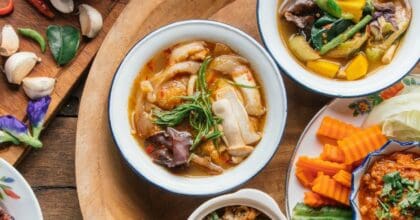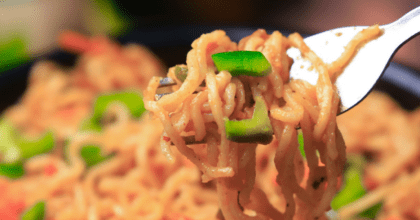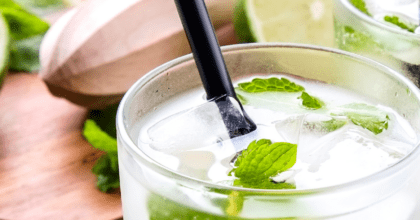Economy food and drink launches overtake Premium for first time in the UK in 2012
With the economic climate remaining uncertain and Brits continuing to be cautious in their spending, economy lines and products featuring value-related claims have never been in greater demand. Indeed, highlighting just how important economy products have become in the nation’s shopping basket, new research from Mintel reveals that the number of economy food and drink products launched in the UK has outstripped the number of premium launches for the first time in 2012.
Today, new product launches featuring economy claims accounted for 9% of total new food and drink launches in 2012 in the UK, compared to 7% of launches featuring premium claims. In contrast, back in 2008, premium accounted for 9% of total food and drink launches compared to 2% of economy.
This surge in economy lines makes the UK the leading country in terms of food and drink new product launches with economy claims globally, accounting for 21% of global food and drink economy introductions in 2012. What is more, in 2012 the UK even exceeded the US, which accounted for 20% of global economy launches in 2012. Looking at other markets worldwide, Japan ranked third with a 15% share of global economy NPD activity, followed by France, Australia, Spain and Italy (4% respectively).
David Jago, Director of Innovation and Insight at Mintel, said:
“The UK economy has struggled to see market recovery and consumer disposable income has remained under pressure. This has given buoyancy to the trend for food and drink brands and grocers to push their value credentials to the foreground. Investment in NPD across economy lines has reflected this, increasing steadily since 2010, outstripping the number of new product launches featuring premium claims. Much of the activity in the economy segment in 2012 was fuelled by UK supermarkets improving their value-for-money ranges in response to consumer challenges dictated by the ongoing economic turmoil.”
“The largest share of products with economy claims is driven primarily by significant private label investment in essential economy product ranges. Meanwhile, branded manufacturers in the US and Europe have used bulk value positioning, increasing pack sizes to deliver lower average pricing per unit or pound, but higher overall package costs. However, this value pack strategy ignores some basic economics of poorer consumers, suggesting that alternative strategies may be successful. As budgets grow ever tighter, consumers are recalibrating their lifestyles and making new product choices, but they carry their middle and upper-class tastes and experiences with them. Economy product innovation, packaging and marketing needs to remain mindful that downsliding consumers don’t want to be made to feel poorer.” David adds.
Indeed, economic challenges are continuing to reshape consumer lifestyles and expectations within and outside the UK. And it seems bargain hunting has become ingrained amongst Britain’s savvy shoppers, with more than seven in ten (72%) consumers saying they like the ‘thrill’ of getting a bargain. The figure peaks among women (77% female consumers vs 66% men) and it is also strong amongst the highest earners (75% of those earning £50,000 or over, vs 70% of those under £9,500 and 78% £9,500-15,499). Today, promotional activity has become essential to more than half (55%) of British consumers, who only buy certain products or brands when on promotion. And some four in ten (39%) say that promotions allow them to buy foods that they would not be able to afford otherwise.
In the US, more than six in ten (62%) Americans look at sale items first when shopping in grocery stores and supermarkets, while about half (49%) use coupons and almost three in ten (28%) always look for the cheapest products. Meanwhile, in continental Europe, a significant portion of European consumers report switching from branded to cheaper private labels (34% in Spain and Italy, 21% in France and 25% in Germany) as well as cutting down the number of premium products they buy (21% in France, 19% in Italy, 18% in Germany and 17% in Spain).
Benjamin Punchard, Senior Global Packaging Analyst at Mintel, said:
“We’ve recently seen many retailers improving the quality of the packaging for budget ranges, witness Tesco’s move away from those stark blue stripes, as they recognise that this has been a barrier to purchase for the nouveau poor, ie those middle class consumer who increasingly find themselves on an ever tighter budget. With the UK being so well serviced by private label products the actions of retailers can have a far greater impact on the packaging landscape than you might see elsewhere.”
“Alongside clear economy statements on packs, which can be off putting for some, brands have recognised that packaging can give an economical edge through offering a reassurance of value. This might be packaging that protects the product better so that the consumer can rest assured that they will be able to use the product before it goes off. Similarly portioned or dosing packs tell the consumer that they will definitely get the stated portions out of a pack – both a value proposition and a helpful measure for those on a budget needing to know exactly how far a product will stretch.” Benjamin concludes.
-
Mintel StoreGet smart fast with our exclusive market research reports, delivering the latest data, innovation, trends and strategic recommendations....View reports
-
Mintel LeapMintel Leap is a revolutionary new AI-powered platform that will transform your research process....Book a demo







































